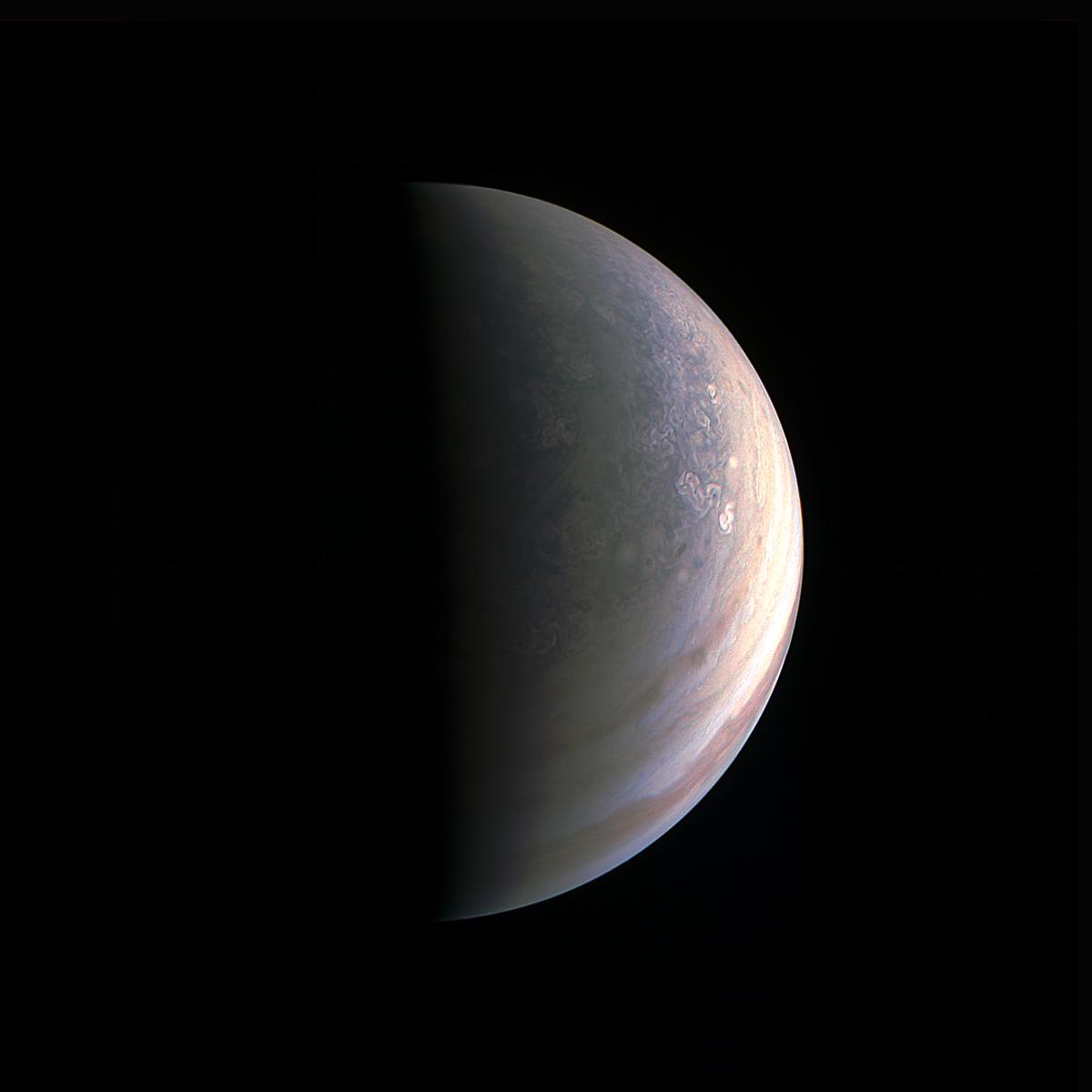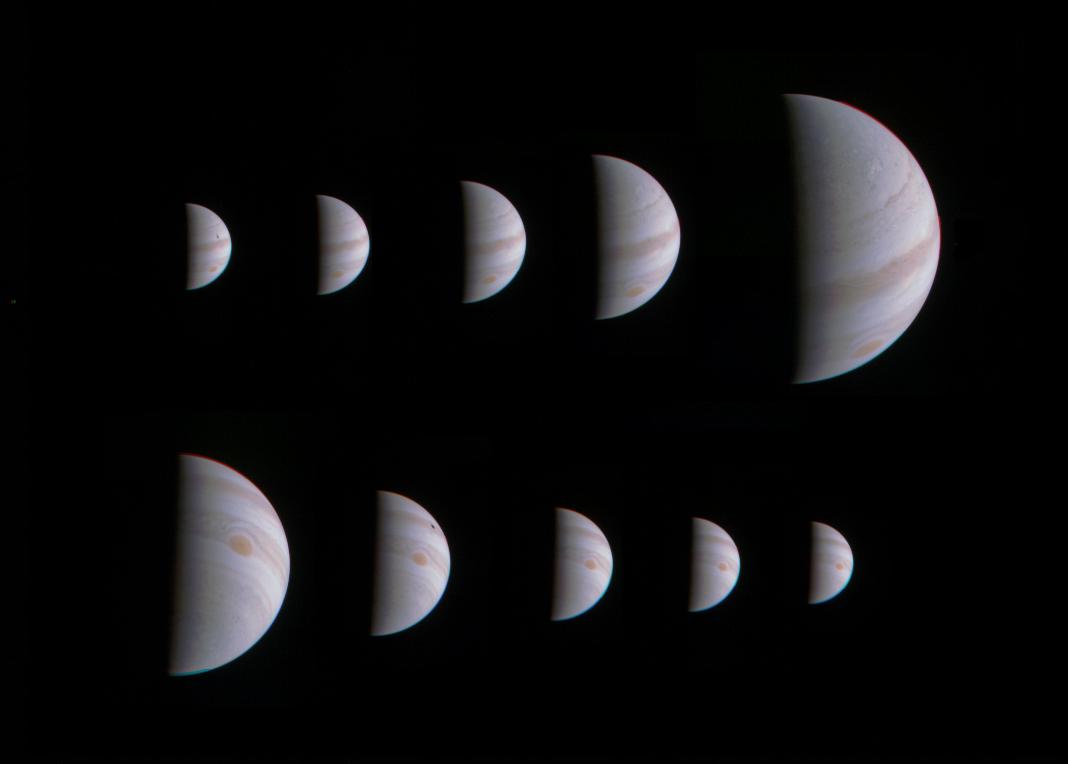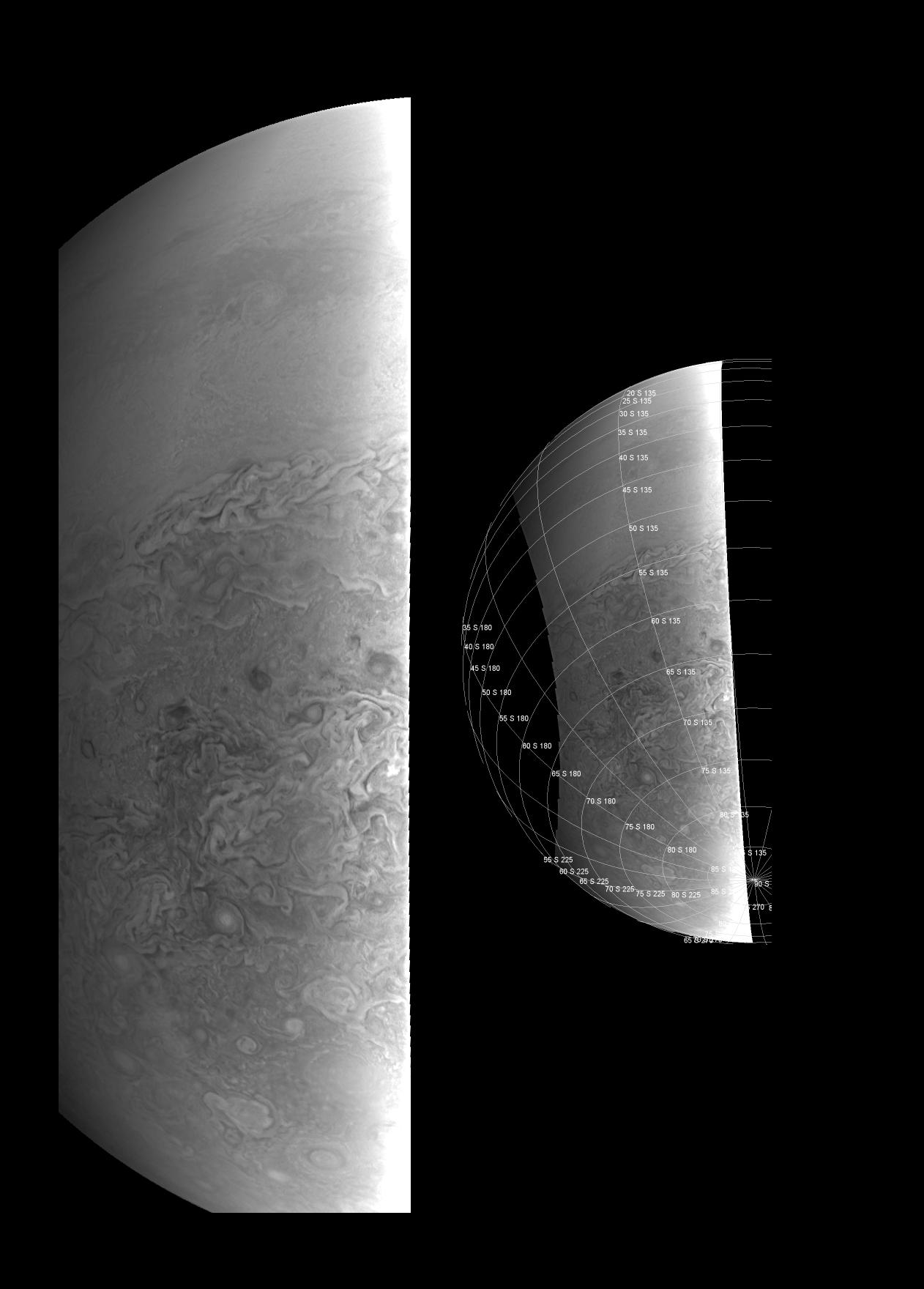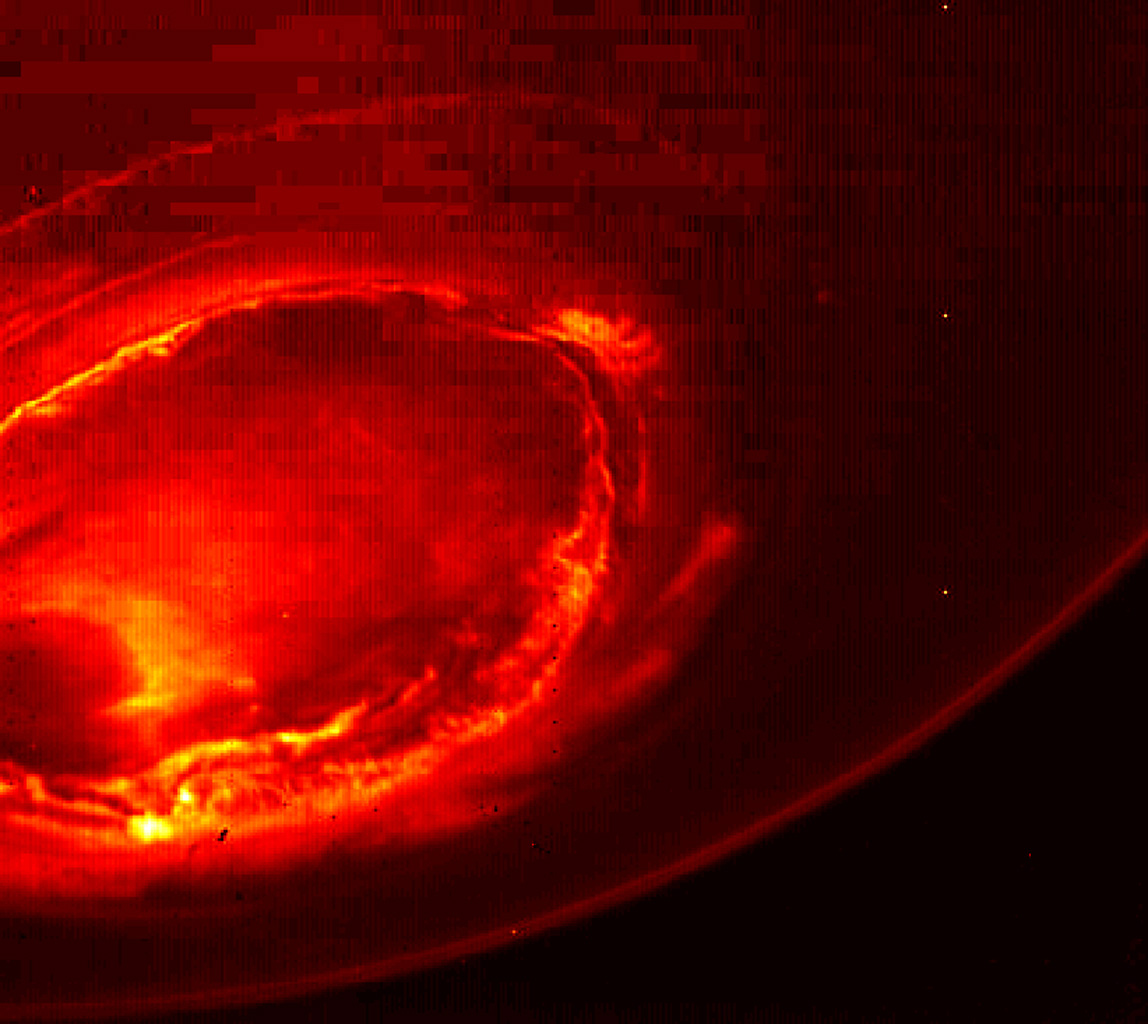Jupiter Up Close: Tour the 1st Amazing Flyby Photos by NASA's Juno Probe
Jupiter, Up Close
NASA's Juno spacecraft made its closest approach to Jupiter on Aug. 27, 2016, swinging around the planet at a speed of 130,000 mph (208,000 km/h). The flyby was the first of 36 flybys planned for Juno's visit in orbit around Jupiter. Take a photo tour of Juno's amazing first close-up view of Jupiter in this gallery.
First Stop: Closing in on Jupiter
Closing In On Jupiter
Juno used its on-board JunoCam instrument, to captured this view of Jupiter's north pole. At the time, Juno was about two hours away from its closest approach, which brought the probe within 2,600 miles (4,200 kilometers) of the planet.
NASA billed the flyby photos from Juno as showing Jupiter as it's never been seen before.[NASA's Juno Probe Buzzes Jupiter in Its First (and Closest) Flyby]
NEXT: Jupiter's Cloud Tops
Jupiter's Polar Cloud Tops
About an hour before Juno's closest approach during the Aug. 27, when the spacecraft was about 48,000 miles (78,000 km) from Jupiter, the probe captured this view of the planet's polar cloud tops. The image has been contrast-enhanced to show details in the clouds, like the shadows they cast on the planet.
Jupiter's clouds create storms and weather unlike anywhere else in the solar system. [What's Hiding Below Jupiter's Clouds?]
Breaking space news, the latest updates on rocket launches, skywatching events and more!
NEXT: Jupiter Down Under
Jupiter Down Under
The JunoCam instrument also caught a view of Jupiter's never-before-seen south polar region about an hour after closest approach on Aug. 27, when the spacecraft was roughly 58,700 miles (94,500 kilometers) above the cloud tops. [Jupiter's Wild North Pole, Southern Auroras Photographed for 1st Time]
NEXT: Transitions of a Planet
Transitions of a Planet
This montage of 10 JunoCam images shows Jupiter growing and shrinking in apparent size before and after NASA's Juno spacecraft made its close approach on August 27, 2016.
Juno snapped one photo every ten hours from Aug. 25 to Aug. 29 to create this frame-by-frame view of its closest orbital flyby. [Infographic: How NASA's Juno Mission to Jupiter Works]
NEXT: Stripes and Swirls
Stripes and Swirls: Contrasting Features
This southern hemisphere view of Jupiter shows the transition between banded cloud structures near the equator and the more chaotic, swirly features near the polar region.
The JunoCam captured this image shortly after Juno made its closest approach to Jupiter on Aug. 27, 2016. [Jupiter's Atmosphere & the Great Red Spot]
NEXT: Infrared Southern Aurora
Infrared Southern Aurora
This infrared image from Juno provides an unprecedented view of Jupiter's southern aurora. Jupiter's massive magnetic field gives it the brightest auroras in the solar system, but it's impossible to get a view from Earth.
Juno's Jovian Infrared Auroral Mapper (JIRAM) camera captured this image at infrared wavelengths of 3.3 to 3.6 microns. Excited hydrogen ions at Jupiter's poles emit light of the same wavelength, so the infrared camera was ideal for taking pictures of the auroras. [Jupiter's 7 Most Massive Mysteries]
Read our full coverage of Juno's mission to Jupiter here

Hanneke Weitering is a multimedia journalist in the Pacific Northwest reporting on the future of aviation at FutureFlight.aero and Aviation International News and was previously the Editor for Spaceflight and Astronomy news here at Space.com. As an editor with over 10 years of experience in science journalism she has previously written for Scholastic Classroom Magazines, MedPage Today and The Joint Institute for Computational Sciences at Oak Ridge National Laboratory. After studying physics at the University of Tennessee in her hometown of Knoxville, she earned her graduate degree in Science, Health and Environmental Reporting (SHERP) from New York University. Hanneke joined the Space.com team in 2016 as a staff writer and producer, covering topics including spaceflight and astronomy. She currently lives in Seattle, home of the Space Needle, with her cat and two snakes. In her spare time, Hanneke enjoys exploring the Rocky Mountains, basking in nature and looking for dark skies to gaze at the cosmos.







